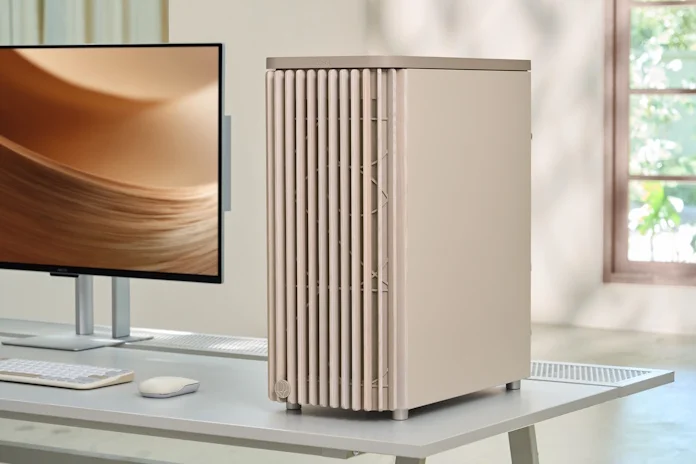Many people don’t have a designated room for their PCs anymore. Plenty of folks are bringing out desktops to integrate into their living room entertainment systems. Others live in small apartments or studios and have one main space for everything, computing activities included. And others lead such mobile lifestyles that a desktop won’t even cut it — they need a laptop that can work at the counter or desk as well as in bed.
With all these scenarios in mind, it’s worth talking about the ways that your PC can be an aesthetically organic part of your primary space. Think about the PC’s material composition, size profile, and how it balances personalization with professionalism. Let’s go over how these elements work to shape your PC’s impact on your living space.
Consider the composition
The idea that desktop PCs must be metal on all sides is an outdated concept. In a time so heavily defined by aesthetics, desktop enthusiasts favor new concepts that better align with their identity and sense of style. Many cases offer panoramic glass sides — some with an eye-catching curve — giving you sweeping looks at your PC’s internals. Even if you do want to hide your components from view, your PC doesn’t need to be a standard, nondescript box of computing power. Fresh materials and concepts are redefining the classic metal frame, giving you options in a range of colors, shapes, and sizes.
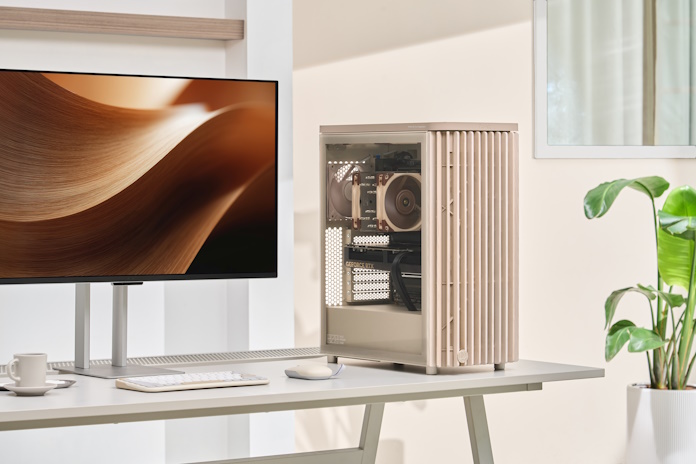
But even more options are entering the fray. Wood-paneled desktop PCs are a fashionable choice these days, tailored to living environments that prioritize a serene atmosphere. Consider that a 2021 study indicated there may be psychological benefits to integrating wood into indoor surroundings. Even your desktop can be part of that calculus.
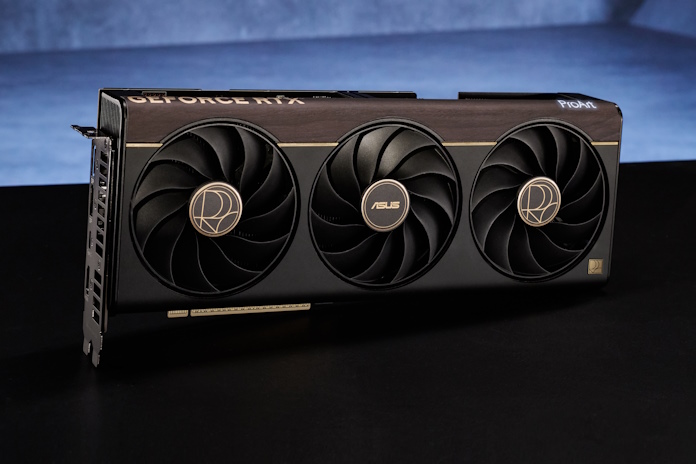
Perhaps you’re infatuated with the modern rustic design movement and want the visual luster of organic composition. That’s where a well-made wood-paneled desktop PC case can make all the difference, providing a distinct experience from all-metal or tempered glass constructions. Or you can have your cake and eat it, too, with a sleek glass panel that shows off your woodgrain ProArt GeForce RTX 5080 graphics card. Think of it as a terrarium PC build — just don’t let your iguana move in.
The important thing is that you opt for a PC that meshes well with your living space and aesthetic sensibilities. You’re going to spend lots of time there, and it’s likely a space where you’ll entertain friends and family, so you want to avoid clutter, mismatched elements, and visual chaos. Whatever PC case material you opt for needs to match your mood.
Shrink the size
If you occupy a small studio apartment or have a living room entertainment center jam-packed with gear, you may want to opt for something tiny. Micro PCs, mini PCs, and other unconventionally small computers fit the bill here. They’ll slot into whatever nook or cranny you can spare, stay well hidden, and give you the computing power you need. Set them atop a desk behind your monitor, tuck them away inside an entertainment center, or inject them into whatever hole in the wall you have handy. Mini PCs can be as small as a novel — meaning, yes, you can even hide them on a bookshelf, so long as it’s not too crowded. Many models have VESA mount support, allowing you to put them even further out of sight behind your television or monitor.

And don’t be afraid to think outside the box. If you have a quality laptop or Windows-powered gaming handheld that you take with you everywhere, you can always plug that into your monitor, hook up a keyboard or mouse, and make that device your dedicated PC. In this way, you’ll have the tiniest possible computer that you can relocate anytime, anywhere, with absolute minimum fuss.
Portable, personalized, professional
If your lifestyle is too mobile for a monitor-based setup, don’t worry. Whether you love bouncing around the apartment or house or enjoy taking your pressing PC tasks with you out yonder, there’s no shame in skipping out on desktops altogether. Invest in a quality laptop and have the freedom to move anywhere you want. Plenty of folks enjoy working from their desk, couch, and bed in equal measure — this is the type of person laptops are built for. Doubly so if you like to work remotely from cafes as well.
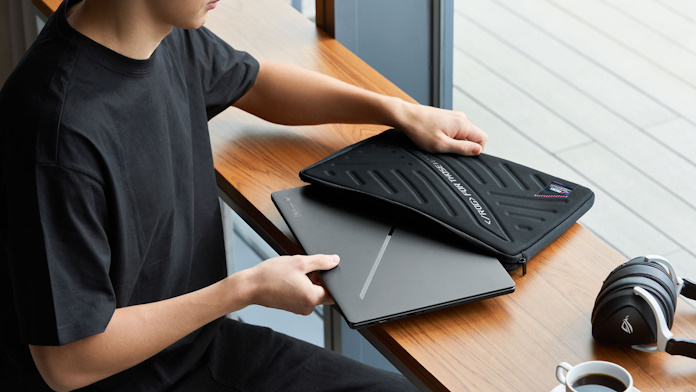
But perhaps you want a laptop ready for PC gaming that’s also slim and subdued enough to click with adult visual sensibilities at a formal place of work. Today’s gaming laptops come in a variety of shapes, sizes, and styles, so no matter your profession, there’s a suitable model waiting for you. Big screens, ultra-thin and light models, laptops with incredible horsepower designed to run the most demanding business applications imaginable — any need can be satisfied. There are plenty of gaming laptops that have the right visual profile to work equally well in the office and at home on the coffee table, so don’t be shy about considering a one-stop-shop solution for your computing needs.
Solutions for seamless PC integration
No matter what kind of living space you have, your PC can integrate well with it for an optimal living experience. And each of the aforementioned options — desktops with style, compact mini PCs, and versatile laptops — all come at a variety of price points, meaning whether you’re an intern in a studio apartment or a salaryman fleshing out your home’s living room, finding an ideal solution should be a manageable endeavor.
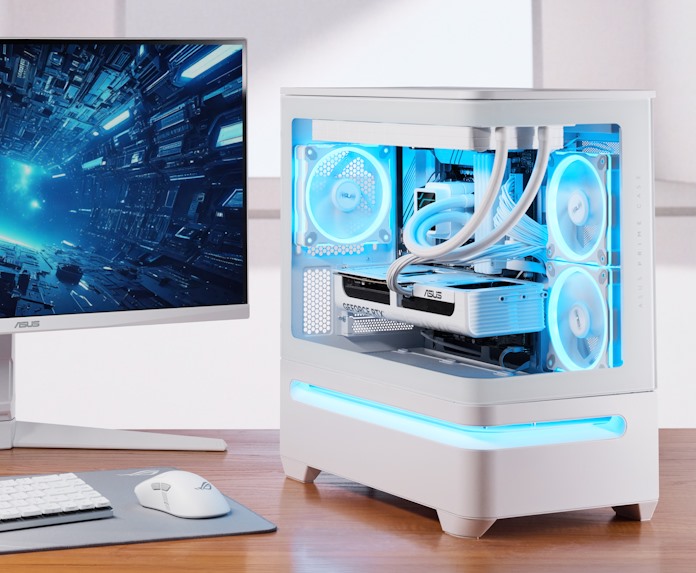
You’re not on your own in the hunt for solutions, either. ASUS offers a variety of wood-paneled and glass case options, in addition to standard all-metal tower PCs. And when you need the most power in the tiniest form factor imaginable, mini PCs such as the ROG NUC are ready to hide with pride.
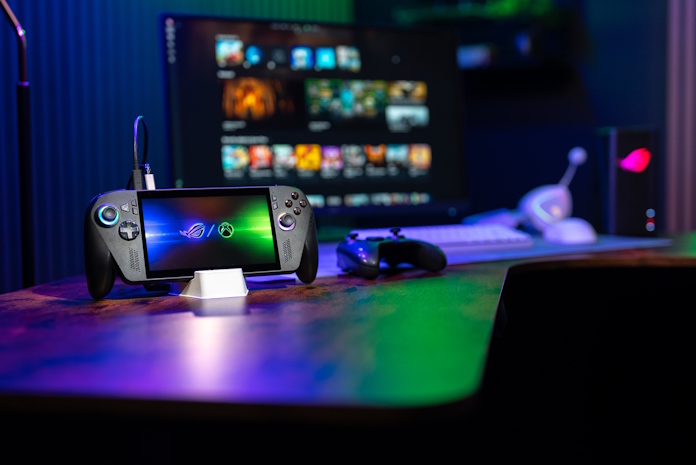
Perhaps you’re a gamer and already have a Windows-powered device such as the ROG Ally or ROG Ally X. In which case, you just need to hook that device up to your existing monitor, plug in a keyboard and mouse, and voila: you have a tiny PC that’s part of your living space when you want it and easily unplugged when you don’t. In this way, you sidestep the need for proper living space PC integration altogether. If you need a bit more connectivity to make this work, keep an eye out for the upcoming ROG Bulwark Dock.
And for the professionals who want one device to rule them all — a lightweight, classy laptop that can vibe in the office just as well as at home on the desk, couch, or bed — ROG Zephyrus laptops are an easy solution. Their tasteful colorways, subdued designs, and tiny footprints mean they’ll fit in just about anywhere, both figuratively and literally.

